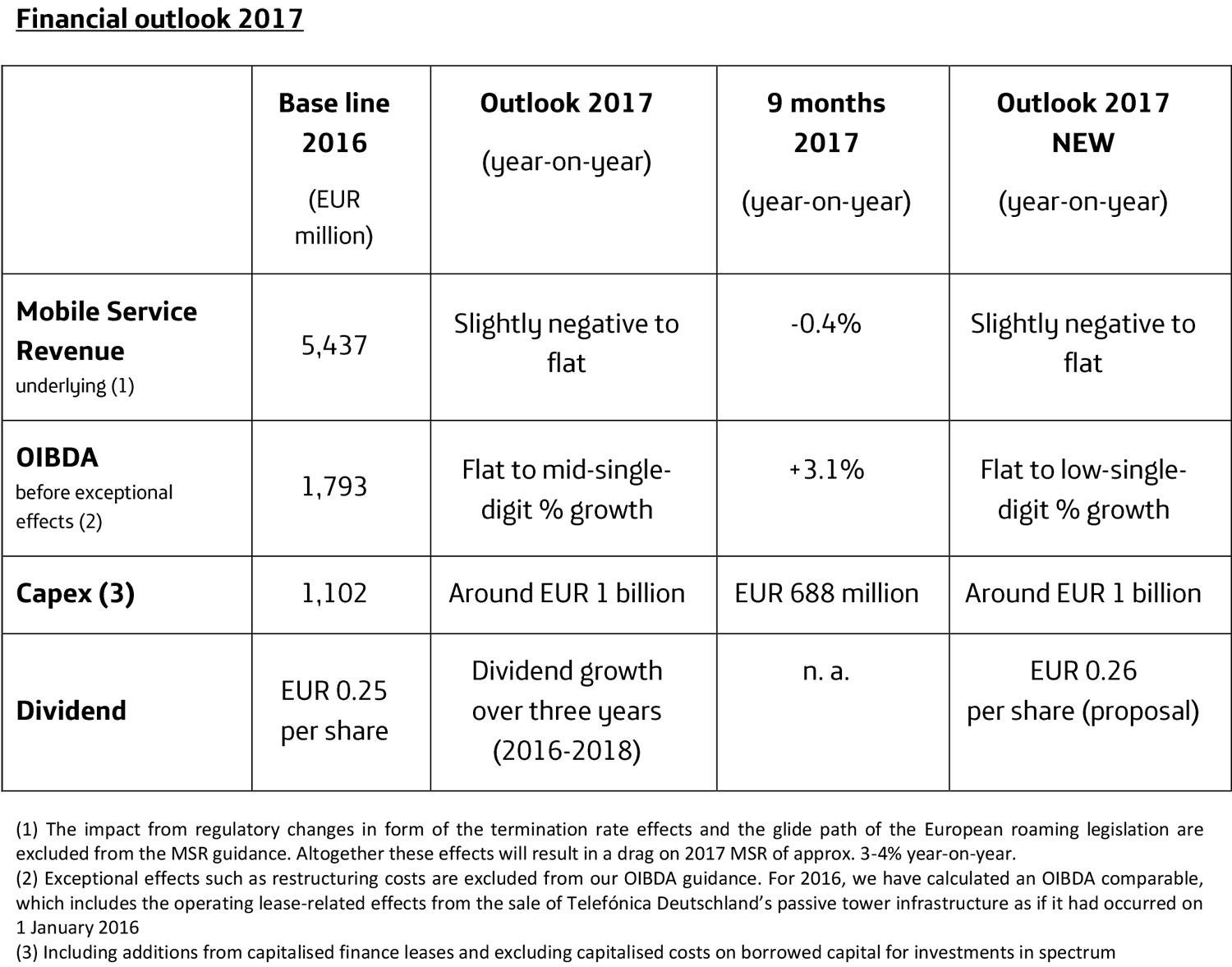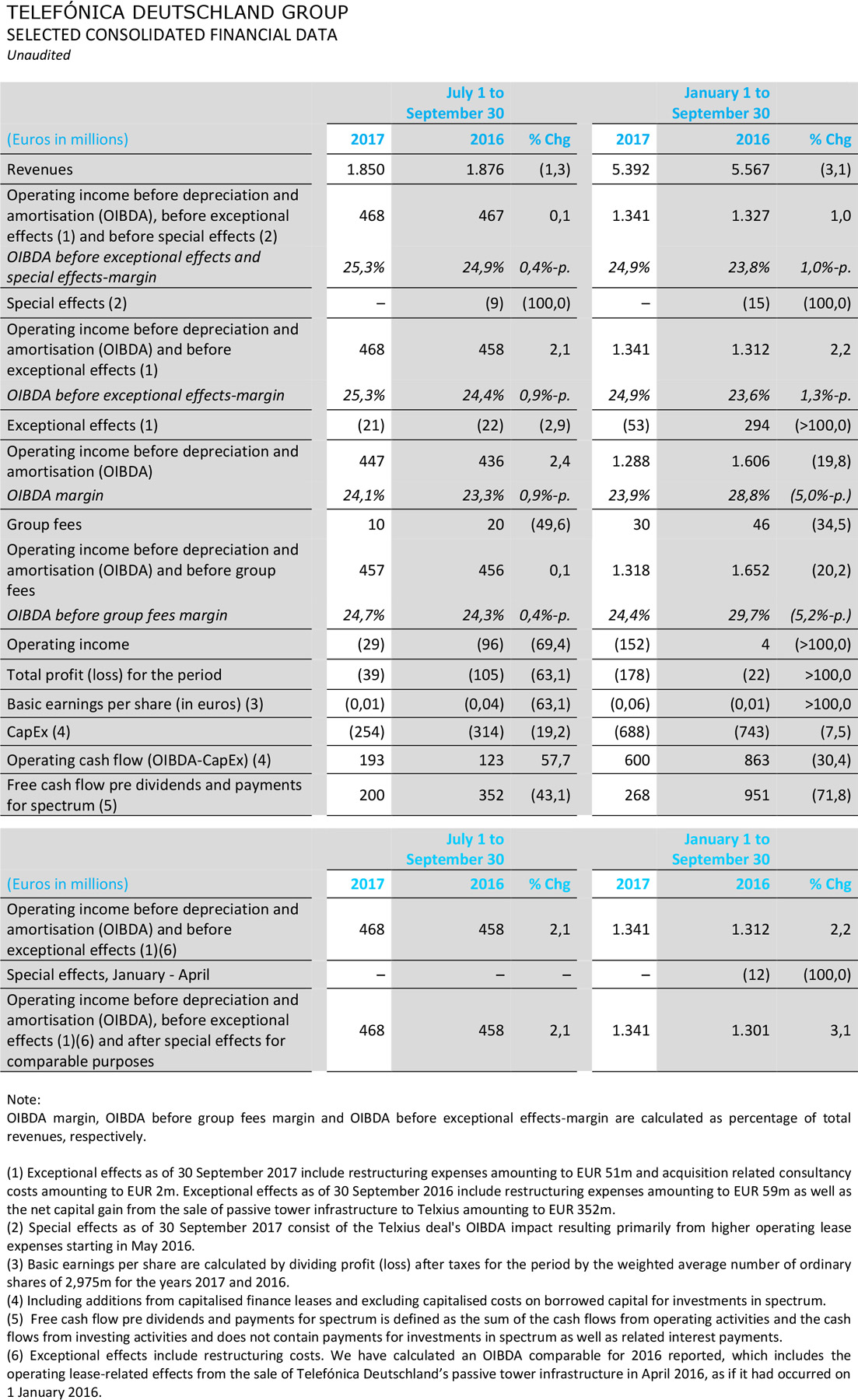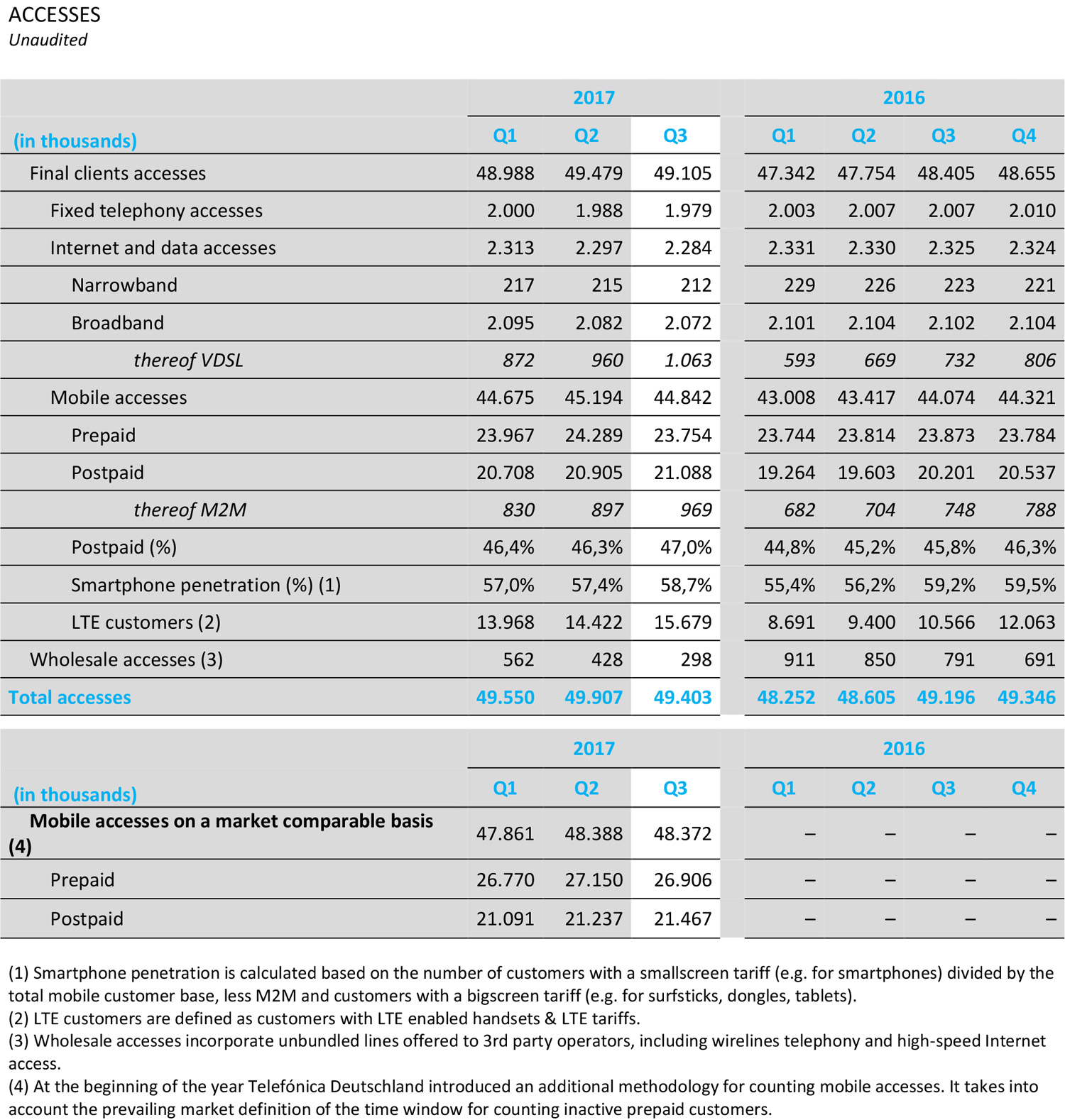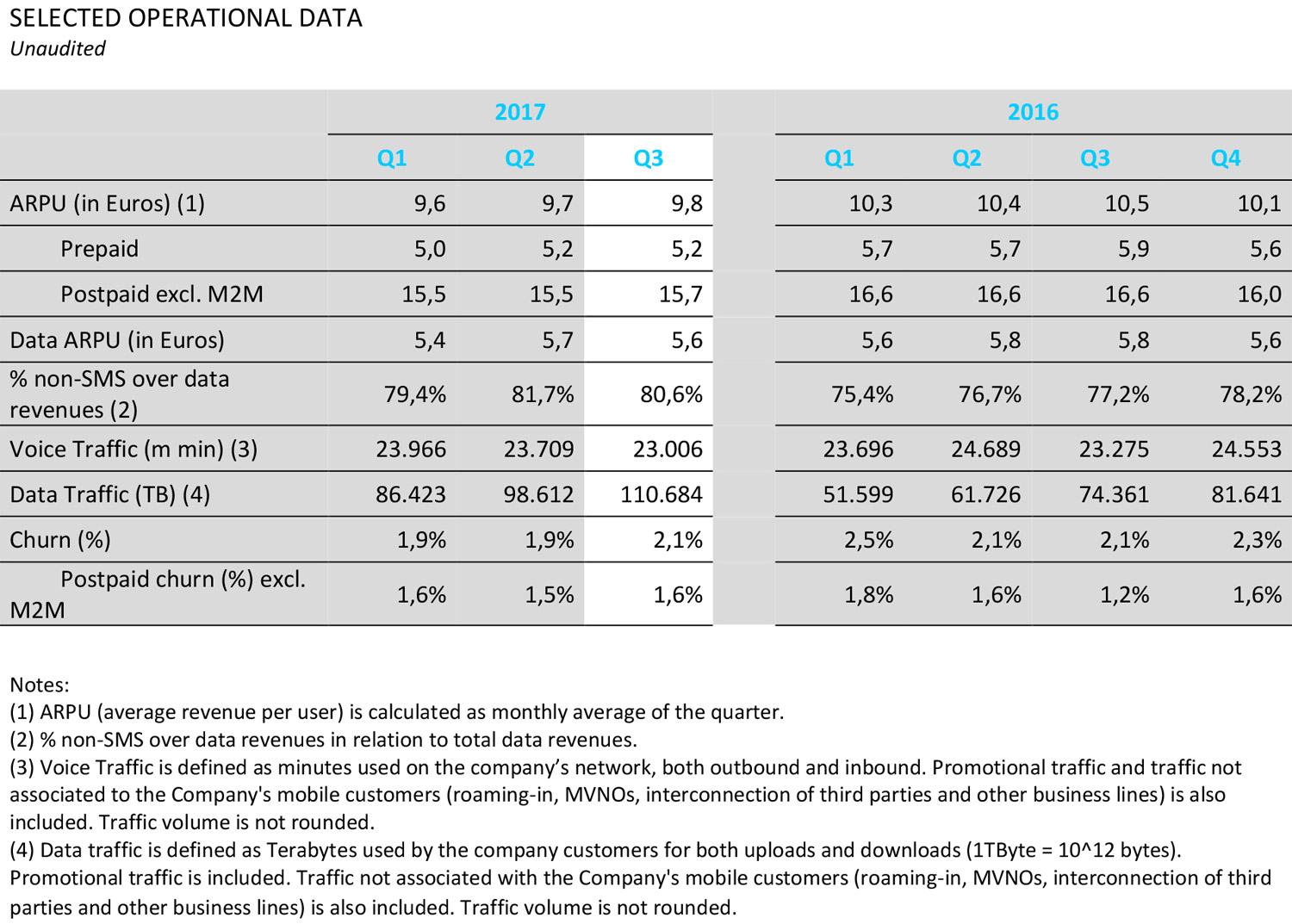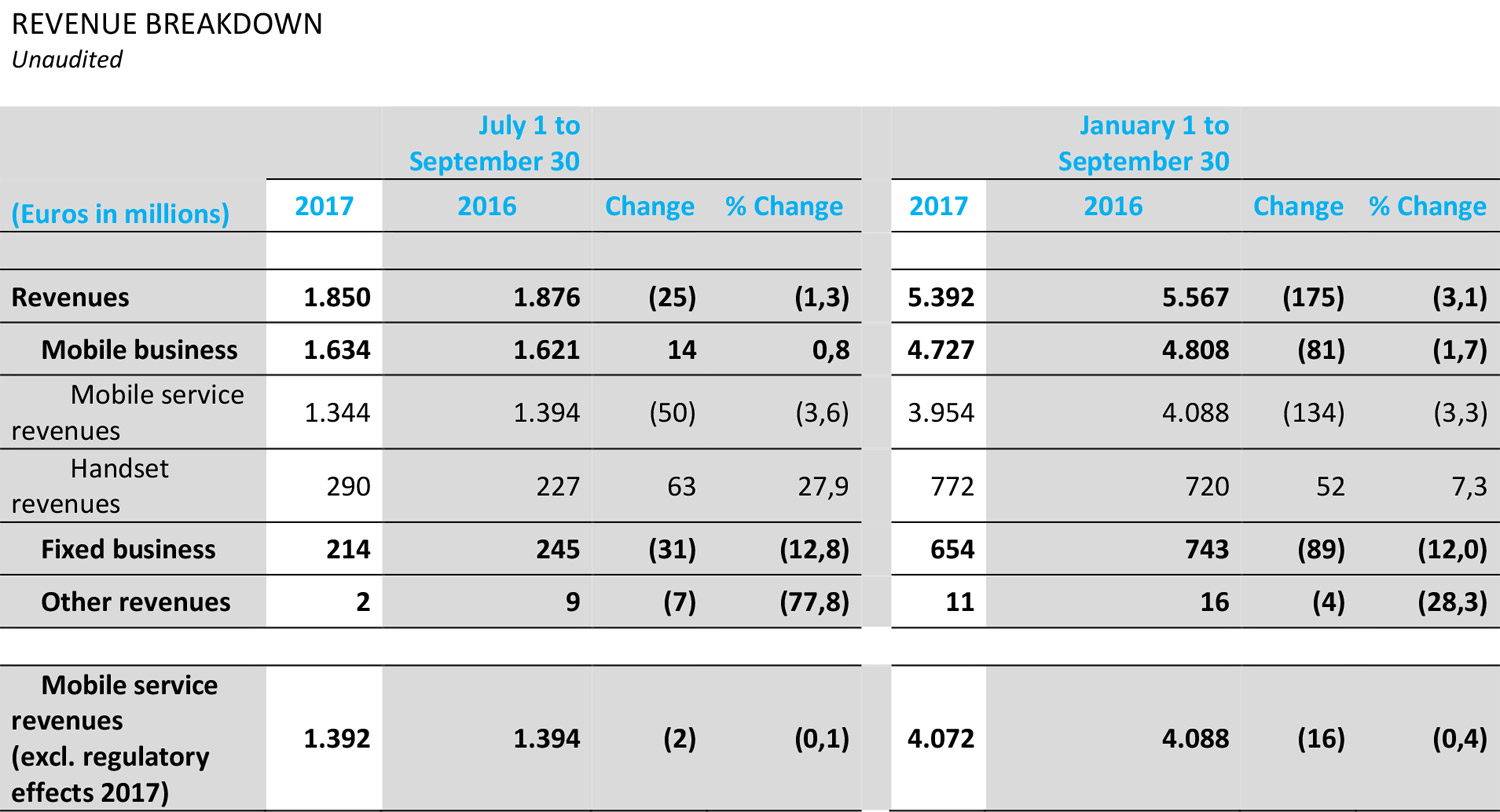25.10.2017
Preliminary figures for Q3 2017:
Telefónica Deutschland data usage surges thanks to new O2 tariffs
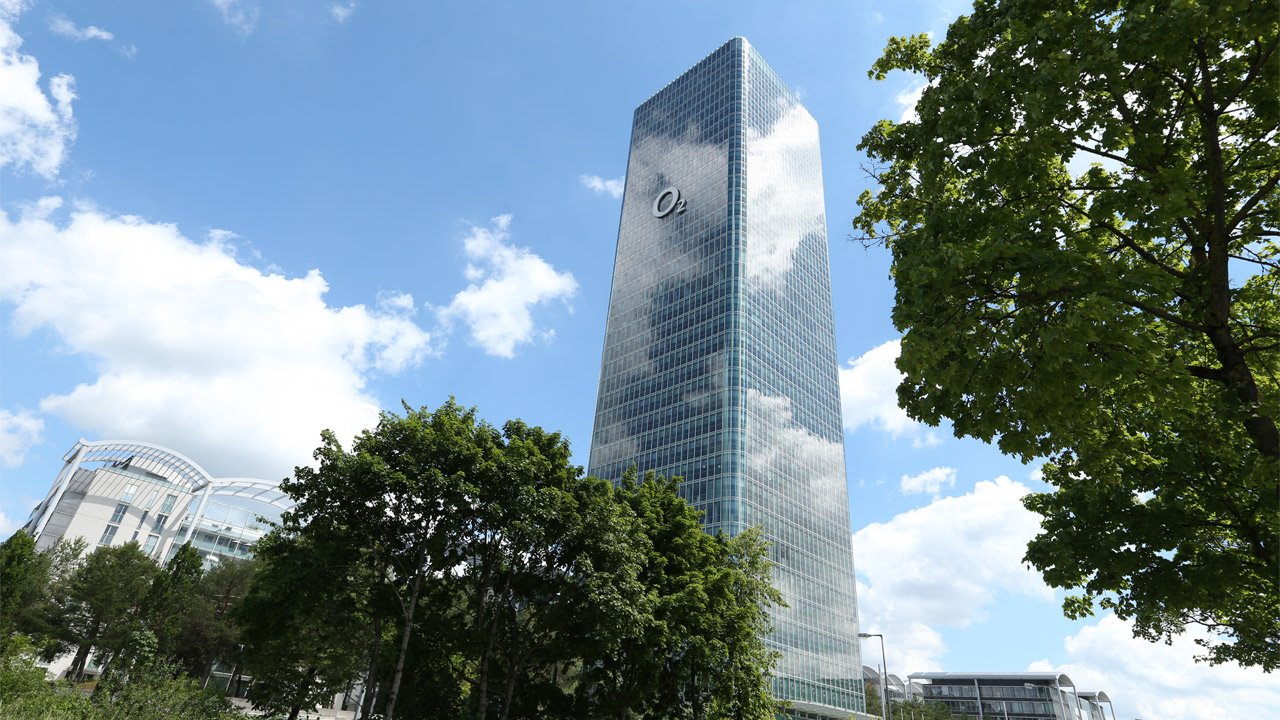
Headquarters of Telefónica Deutschland in Munich
In the third quarter, Telefónica Deutschland continued the positive trend from the first half of the year. Despite regulatory headwinds and an intensely competitive market environment, the company is on track to reach its targets for 2017. By offering large data packages at fair prices, Telefónica Deutschland achieved a breakthrough with regard to mobile data usage in Germany: While O2 customers with LTE tariffs used an average 2.4 gigabyte (GB) of data per month, those with the new large packages averaged more than 5 GB. Also thanks to the new tariffs, the company added 183,000 postpaid customers during the quarter. The mobile service revenue trend excluding regulatory effects improved further from the previous quarters and was nearly stable versus the year-earlier period at -0.1 percent. Prompted by the strong operating performance and the synergies from the integration of E-Plus, the OIBDA excluding exceptional effects2) rose 2.1 percent to EUR 468 million. That was the twelfth straight year-on-year gain since the merger. In order to monetise the growing demand for data, Telefónica Deutschland intends to continue to invest in its brands as well as its retail and service activities. The company refines its OIBDA outlook for 2017 within the original range. OIBDA excluding exceptional effects is now expected to remain flat or grow by a low single-digit percentage. In line with the dividend forecast, the executive board will propose to shareholders a dividend increase of 1 cent to EUR 0.26 per share for the current financial year.
"With our new, large data packages we offer mobile freedom like never before – and our customers are going for it. Our operating business is on the right track, our transformation is proceeding and we continue to invest in our network, our service and digital innovations for everyday life”, said Markus Haas, the CEO of Telefónica Deutschland. Markus Rolle, who assumed the role of CFO in August, added: “As we grow ever more effective and efficient, we have promised to let shareholders benefit from our strong free cash flow. That’s why we will propose to the next annual shareholder meeting to raise our dividend for 2017 by one cent.”
- Mobile data usage rises 49 percent year-on-year thanks to new big data packages
- 183,000 postpaid net adds in third quarter; company remains wireless market leader with 48.4 million mobile accesses
- Mobile service revenue excluding regulatory effects1) improved again to -0.1 percent; annual target confirmed
- OIBDA excluding exceptional effects2) rises 2.1 percent despite regulatory effects; OIBDA outlook refined
- Shareholder remuneration for 2017 to increase as planned; proposed dividend of EUR 0.26 per share
- CEO Markus Haas: “With our new, large data packages we offer mobile freedom like never before – and our customers are going for it. Our operating business is on the right track, our transformation is proceeding and we continue to invest in our network, our service and digital innovation for everyday life.”
New tariffs promote mobile data usage

The new O2 Free tariffs with their large data packages contributed to demand for mobile data rising once again in the third quarter. In September, Telefónica Deutschland became the first provider in Germany to introduce standard tariffs with data volumes exceeding 10 GB at fair prices. This was preceded by strong demand for the 15 GB tariffs celebrating the brand’s 15-year anniversary. While O2 customers with LTE tariffs used an average 2.4 GB per month, those with the new large data packages averaged more than 5 GB. At the same time, the number of LTE users jumped 48 percent to 15.7 million. Many prepaid customers by now also use LTE.
Telefónica Deutschland had 52.9 million customer accesses at the end of the third quarter. Of those, 48.4 million were mobile accesses. The company therefore remains leader of the wireless market in Germany.
In the postpaid segment, the new large-volume tariffs and a vibrant wholesale business contributed to the company adding 183,000 accesses amid an intensely competitive environment.
In the prepaid business, the number of accesses was reduced by 535,000. The main reason for the decline were the regulatory identification requirements which were introduced in summer and which posed a hurdle to new customers. While demand for prepaid cards continues to be strong, Telefónica Deutschland is working with customers to assist them through the activation process. In addition, visitors from abroad increasingly used the option of using their tariffs from home in Germany without additional cost.
Mobile churn remained low at 2.1 percent and was even lower for O2 postpaid customers at 1.5 percent.
In the fixed-line business, the number of VDSL customers rose 45 percent in the third quarter, crossing the 1 million mark for the first time.
Mobile revenue benefits from strong demand for data
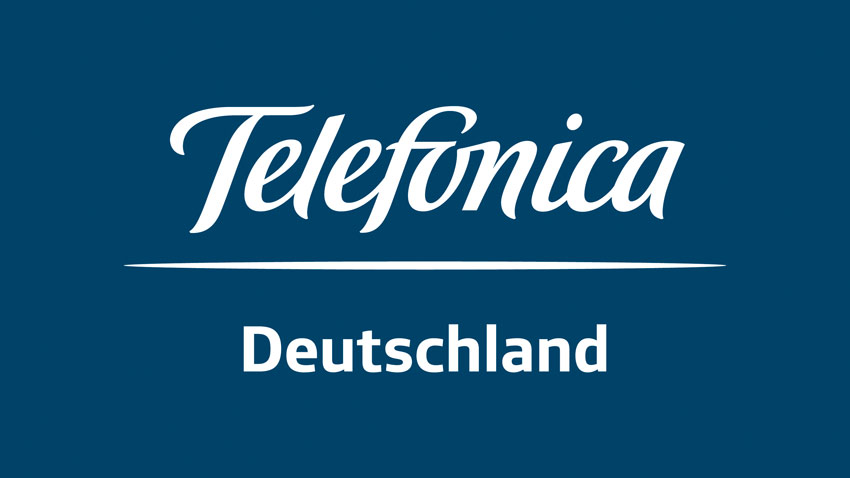
The first nine months of the year was marked by intensive competition in the market. In addition, regulatory decisions like the reduction of mobile termination rates as well as the abolition of roaming charges in Europe affected the revenue of Telefónica Deutschland.
Despite these burdens, mobile service revenue (MSR) declined only slightly to EUR 1.34 billion (Q3 2016: EUR 1.39 billion). Excluding regulatory effects, MSR was almost stable at -0.1 percent compared to the year-earlier period, continuing the positive trend from the previous quarters. The new O2 tariffs contributed to a sequential increase in average revenue per user (ARPU) among postpaid customers to EUR 15.70 (Q2 2017: EUR 15.50).
Device sales jumped 28 percent to EUR 290 million in the past three months because of increased demand and stock-clearance activities.
Fixed revenues fell to EUR 214 million (Q3 2016: EUR 245 million). The continued decrease is expected and stems from the shift to the DSL infrastructure of Deutsche Telekom and the withdrawal from the DSL wholesale business.
The consolidated revenues of Telefónica Deutschland in the second quarter of 2017 amounted to EUR 1.85 billion, which represents a year-on-year decrease of 1.3 percent. In the second quarter, revenues had fallen 3.4 percent year on year.
Twelfth consecutive quarter of year-on-year OIBDA increases
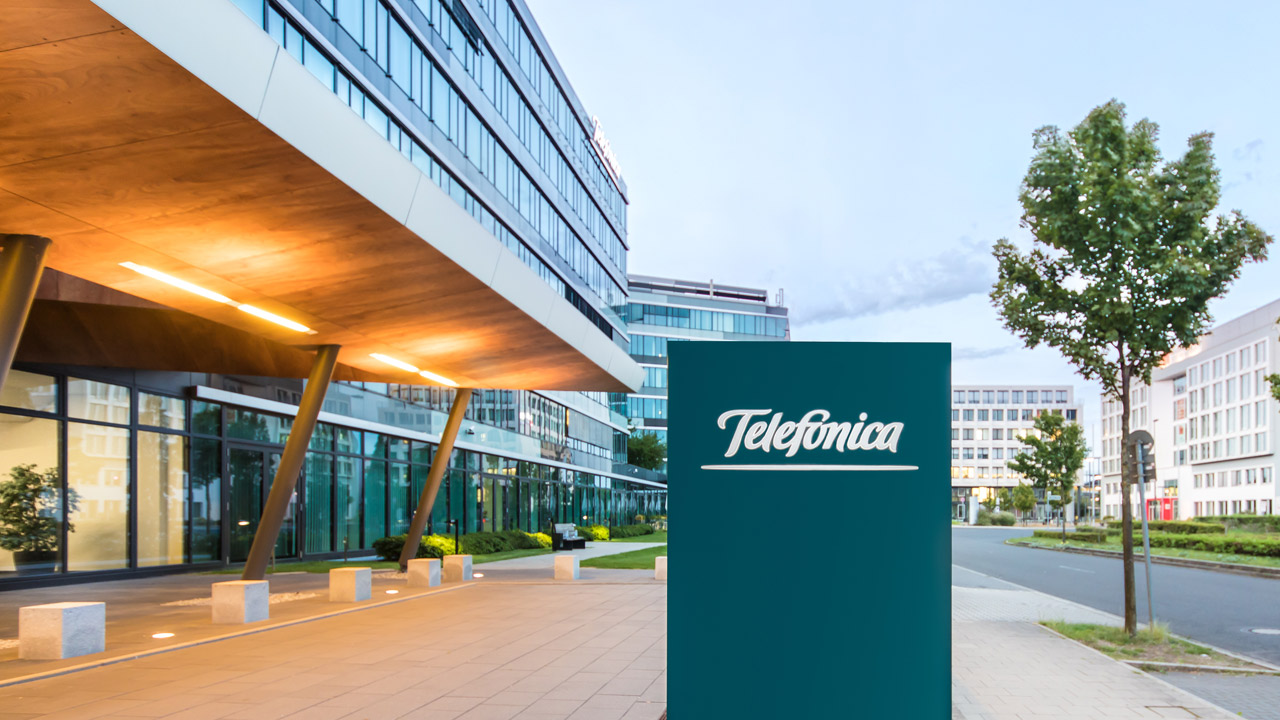
Telefónica Office in Dusseldorf
Following the third quarter, Telefónica Deutschland is fully on course to reach, by the end of the year, 75 percent of the EUR 900 million in operating cash flow synergies targeted for 2019. In the period from July to September, the company was able to generate an additional EUR 40 million in operating cost and revenue synergies.
On the other hand, the abolition of roaming charges, the reduced mobile termination rates and continued spending on monetising data demand reduced operating profit in the third quarter. Nonetheless, thanks to the successful generation of synergies Telefónica Deutschland was able to increase its OIBDA excluding exceptional effects3) to EUR 468 million during the period. That was an increase of 2.1 percent from the year-earlier period and marked the twelfth successive increase on an annual basis.
The respective OIBDA margin improved by 0.9 percentage points from the year-earlier period to 25.3 percent in the three months through September.
Efficient network upgrades and improved result
Investments (CapEx4)) totalled EUR 254 million in the third quarter (Q3 2016: EUR 314 million). In 2016, investments were heavily skewed toward the months July through December. In addition, Telefónica Deutschland was able to invest more efficiently thanks to progress with the network integration – in the third quarter alone CapEx synergies totalled about EUR 30 million.
The net result for the period from July through September was EUR -39 million (Q3 2016: EUR -105 million). As expected, the net result for the period under review was affected by further write-downs related to the integration of E-Plus and network consolidation. These have no effect on the company's liquidity and thus do not reflect its operational capabilities.
The free cash flow (FCF)5) in the third quarter amounted to EUR 200 million (Q3 2016: EUR 352 million). Consolidated net financial debt6) was EUR 1.51 billion at the end of September. With a leverage ratio of 0.8, Telefónica Deutschland remains below its self-defined limit of 1.0.
Further progress with digital transformation
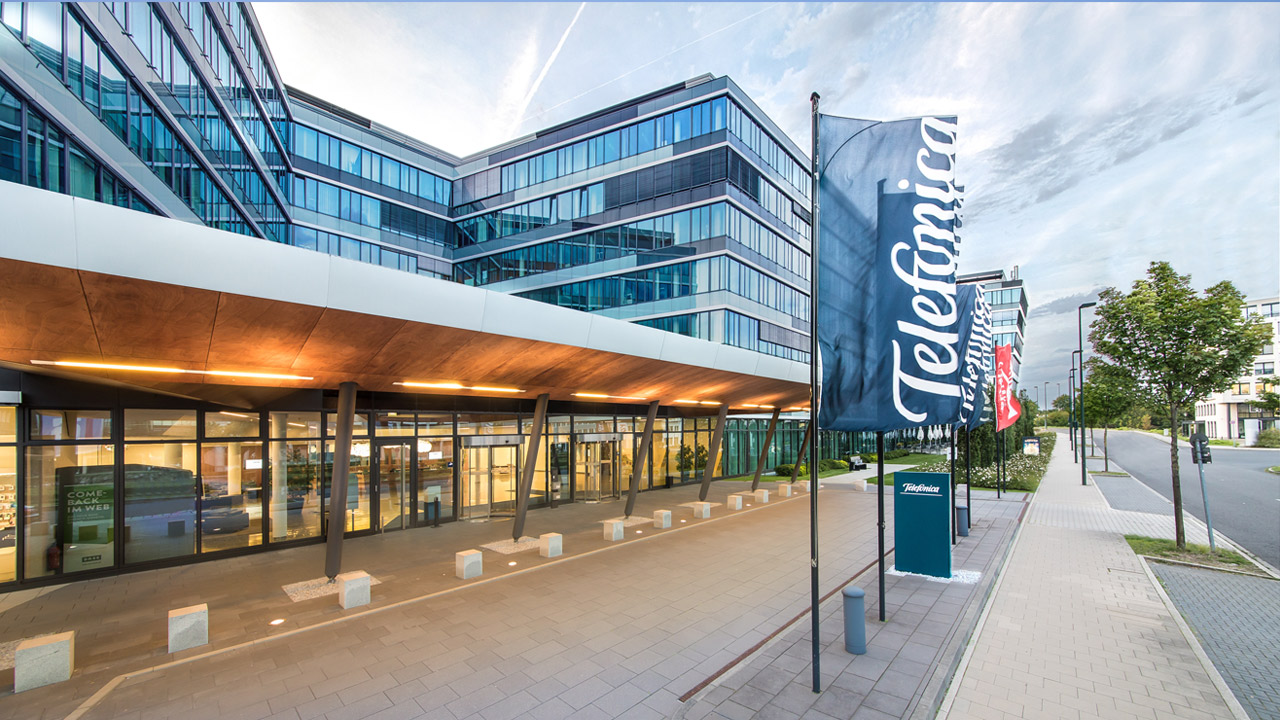
Telefónica Office in Dusseldorf
The company pushed ahead with its digital transformation during the third quarter. Its goal is to become the digital hub in customers' lives, to drastically reduce the complexity of everyday digital life and achieve mobile freedom.
An important component of this transformation and a source of future revenue is Telefónica NEXT. The subsidiary focused on data-based growth areas has developed well in the first year of its existence and during the third quarter. In the area of transport analytics, the startup in August began offering detailed data analysis tools for transport planning in Munich together with the traffic advisory company Intraplan. In October, Telefónica NEXT began putting its data analytics expertise to use in selected O2 retail stores across Germany. By measuring customer traffic and the time they stay in a shop, Telefónica Deutschland learns more about its customers, enabling it to tailor the stores to their preferences. Geeny, the IoT platform for end customer applications, is now available to interested developers and companies.
Telefónica Deutschland also added to its portfolio of innovative solutions for private customers. Since the beginning of the month, the popular O2 Banking app rewards customers with one megabyte (MB) of fast data volume for every euro they spend with their O2 Banking Mastercard.
Outlook
Telefónica Deutschland is refining its OIBDA outlook for the current 2017 fiscal year within the previously communicated range. OIBDA before exceptional effects is now expected to remain flat or grow by a low single-digit percentage. This is due to regulatory headwinds as well as continued investments in brands, retail and service activities to monetise the growing demand for data. The table below provides details of the financial outlook.
| 1 | Effects include reduction in termination rates and the glide path of the European roaming regulation |
| 2 | The nine months ending 30 September 2017 include restructuring expenses of EUR 51 million and EUR 2 million of acquisition related consultancy fees, while the same period of 2016 included restructuring expenses of EUR 59 million as well as the net capital gain from the sale of passive tower infrastructure to Telxius amounting to EUR 352 million. For 2016, we have calculated an OIBDA comparable which includes the operating lease-related effects from the sale of Telefónica Deutschland’s passive tower infrastructure as if it had occurred on 1 January 2016 |
| 3 | The nine months ending 30 September 2017 include restructuring expenses of EUR 51 million and EUR 2 million of acquisition related consultancy fees, while the same period of 2016 included restructuring expenses of EUR 59 million as well as the net capital gain from the sale of passive tower infrastructure to Telxius amounting to EUR 352 million. For 2016, we have calculated an OIBDA comparable which includes the operating lease-related effects from the sale of Telefónica Deutschland’s passive tower infrastructure as if it had occurred on 1 January 2016. |
| 4 | Including additions from captalised finance leases and excluding capitalised costs on borrowed capital for investments in spectrum. |
| 5 | Free cash flow pre dividends and payments for spectrum (FCF) is defined as the sum of cash flows from operating activities and cash flows from investing activities. |
| 6 | Net financial debt includes current and non-current interest bearing financial assets and interest bearing liabilities as well as cash and cash equivalents and excludes payables for the spectrum auction. |
